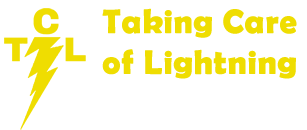According to Dallas news “In 2019 Texas recorded more lightning strikes than any other state. Texa’s geographic location, humidity, and the state’s massive size make it an annual contender to lead the nation in lightning strikes.
According to CDC “The odds of being struck by lightning in a given year are about 1 in 500,000. However, some people may have a higher risk if they work outside or live in certain parts of the country such as Florida or Texas.”
We have put together some frequently asked questions.
Many homeowner’s insurance plans provide credits for lightning protection. However, please check with your insurance.
Lightning protection is not a do-it-yourself project. If a lightning protection system is not installed properly it may not provide protection to your property.
Lightning rods are 12 inches tall and 3/8” in diameter. They are barely visible from the ground. When lightning protection system is designed during construction all of the lightning protection system, except the rooftop terminals, can be concealed and can be run inside the structure. Decorative finials can be used as air terminals, making the lightning protection an architectural accent.
The cost of lightning rod protection system depends upon the structure of your property. It is much less than cost of repairs or replacement damage due to lightning strike.
No, the lightning rods are not usually visible from the ground. The lightning protection system can be customized so that it blends in with its surroundings. If a lightning protection is installed in the early stages of the building construction the down conductor for the system can even be concealed inside the walls.
A lightning protection system can prevent property damage from the effects of a lightning strike. It provides the electric charge produced by lightning a path of least resistance to the ground.
Lightning rods do not attract lightning. Nor do they repel lightning. Lightning rods provide a resistance path to ground. If lightning strikes, the system attempts to carry the harmful electrical current away from the structure and safely to ground
Trees do not no provide protection from lightning. Instead they redirect lightning towards a home or structure causing structural damage as well as power surges in the structures wiring.
No. The electrical ground is not designed to handle the lightning strike. It is installed to protect the internal workings of the electrical system in your building.
No. No matter where you are located there is a risk of lightning strike.
The structural steel of a building does conduct lightning. You need a lightning protection system to intercept lightning to make sure that the lightning is able to pass harmlessly through the building.
These devices alone do not provide protection to a building structure. The only way they are effective is when they are a part of a complete lightning protection system.
Lightning rods take the lightning charge safely to ground. Lightning rods supply the easiest path to ground safely.
Lightning Protection rods are very effective in keeping structures safe. Because of this they are installed at airports on many government buildings, including The White House, numerous commercial buildings and houses. The NFPA has maintained a Standard for lightning protection for over 100 years.
No, nothing can can prevent the lightning from striking. The purpose of a lightning protection system is to intercept the lightning strike and dissipate it safety into the ground. A lightning protection system doesn’t prevent a lightning strike; Lightning rods intercept a lightning strike and provide pathways to safely conduct the lightning to the ground.
Lightning protection can be installed at any time for existing structures and new construction. At Taking Take of Lightning, our experts specialists can provide design, specification, consultation and installation services to develop a plan that best fits your project requirements.
UL Approved/Master Installer provide provide compliant systems by specifying, purchasing, and installing lightning protection systems certified by UL. Each design and system installation is fully compliant with the applicable standard(s).
